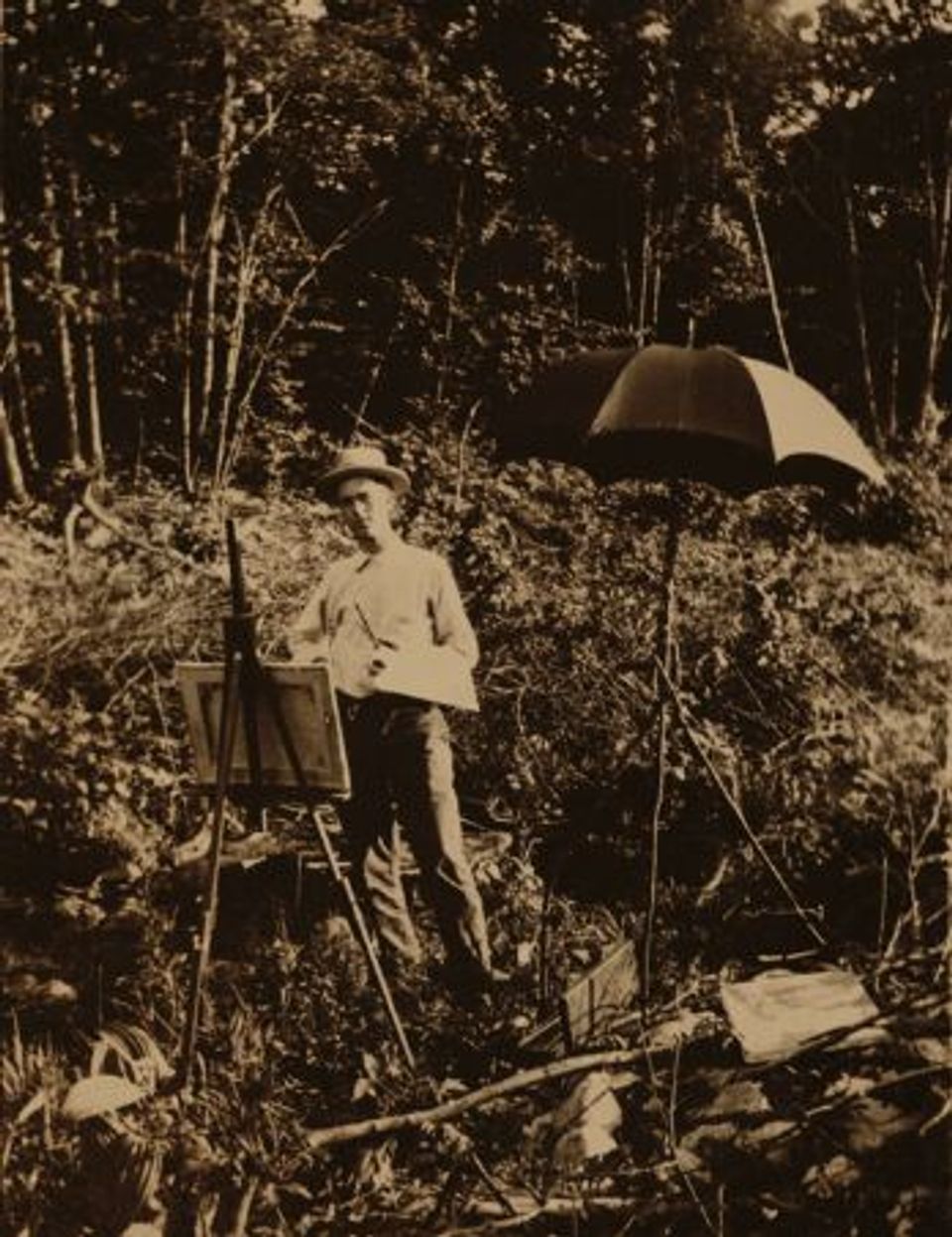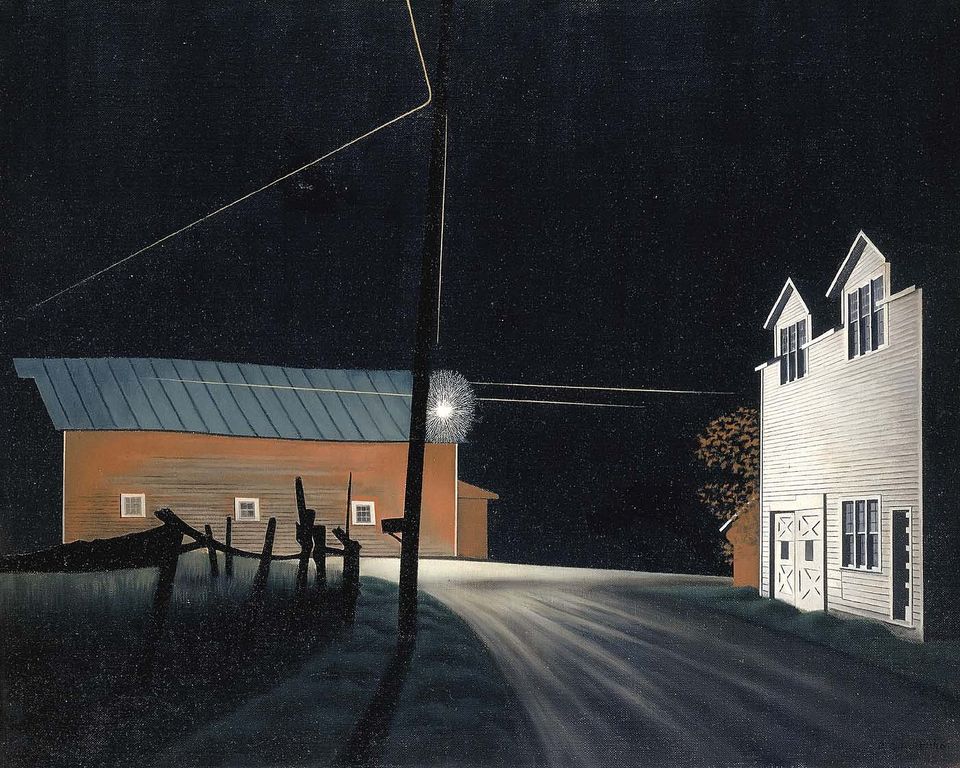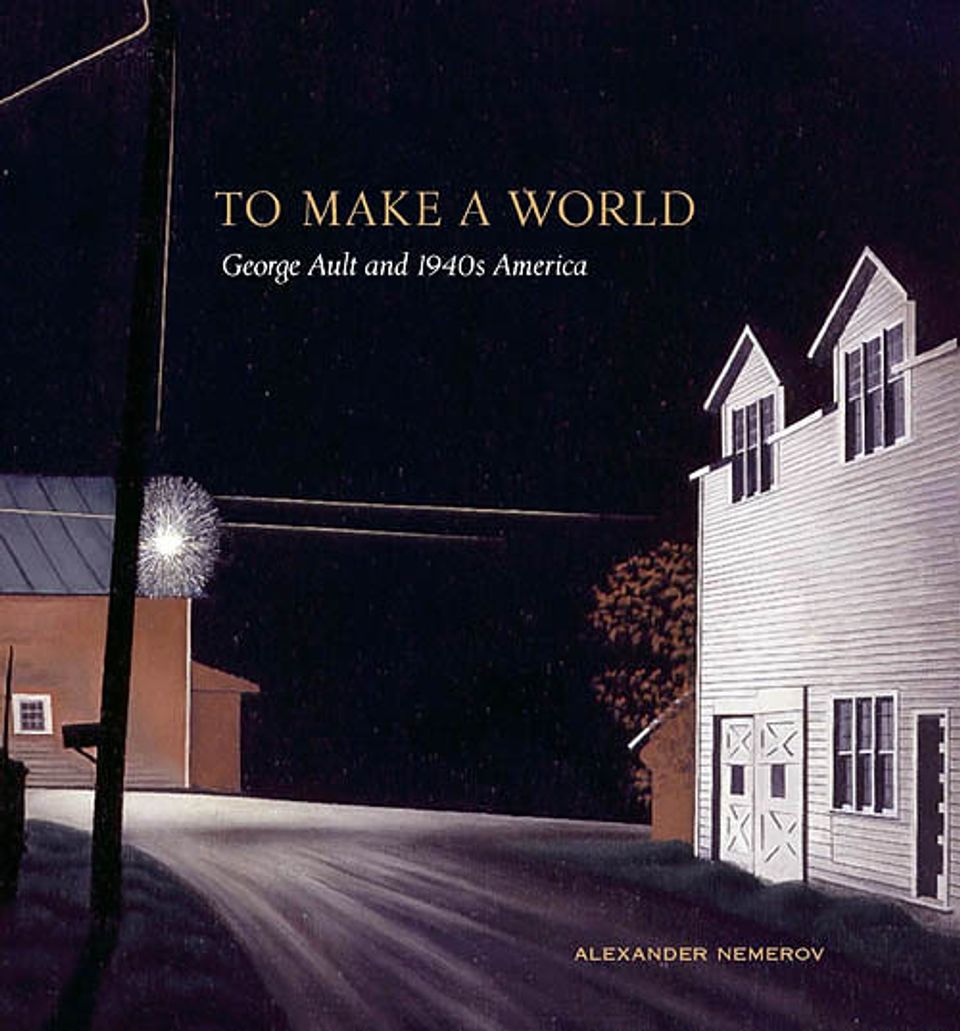George Ault

- Biography
Ault was brought up in England and came late to an appreciation of his American origins. After training at University College School in London, the Slade School, and St. John's Wood School of Art, his painting style was described as an Anglicized version of impressionism. But when he returned to America in 1911 he began to paint New York night scenes and architectural subjects in a spare, modernist style. This caused his father, an academic painter, to stop supporting him. In the 1920s, on vacation in Provincetown, he painted the local scenery in oils and watercolors. These works were shown at a local gallery and in New York. In the early 1930s he worked on New Deal art projects, gradually severing most of his ties with the art market. He moved to Woodstock, New York, in 1937, but avoided life in the art colony there. A nearby barn, which he painted three times, was a favorite subject, symbolizing for hire a dying, agrarian way of life in the Catskills. In this sense his work echoed, from his own modernist viewpoint, the preservationist themes of many New England artists. Ault's life, plagued by illness, depression, and poverty, ended with his suicide in 1948.
William H. Truettner and Roger B. Stein, editors, with contributions by Dona Brown, Thomas Andrew Denenberg, Judith K. Maxwell, Stephen Nissenbaum, Bruce Robertson, Roger B. Stein, and William H. Truettner Picturing Old New England: Image and Memory (Washington, D.C.; New Haven, Conn; and London: National Museum of American Art with Yale University Press, 1999)















